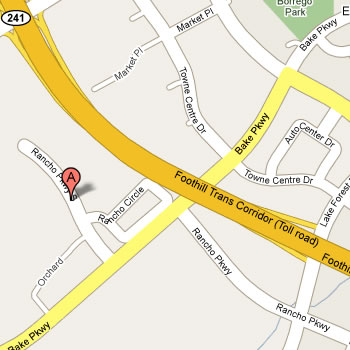IF THE BIGGEST LOSER CAN DO THIS, SO CAN YOU
Ron Saetermoe
If you’ve ever done a triathlon, of any distance, you’ve probably had at least one person tell you “I could never do a triathlon.” I’ve actually heard it a bunch of times and my response is always the same “Yes, you can.”
Now, I’m a positive person, but I’m not one of those people that tells everyone they can do anything if they put their mind to it. If that’s true then why don’t we have a cure for the common cold?
I do, however, believe that almost anyone can do a triathlon if they put in the time and work with a plan. I’ve seen it many times. If you hang around a while, after nearly any race, you’ll see the people that defy logic. Young kids, overweight people and people so old you wonder how they stay upright without a walker.
Bill Bell is one of those guys. He’s slowed down a lot in recent years, and has had multiple knee surgeries, but he’s still out there doing it at age 80!
Attached to this article is a YouTube video of an equally inspiring dude, Matt Hoover. Matt Hoover was the winner of the NBC television show “The Biggest Loser” back in 2005. I won’t say too much about the video other than you should grab a tissue or two before you watch it. 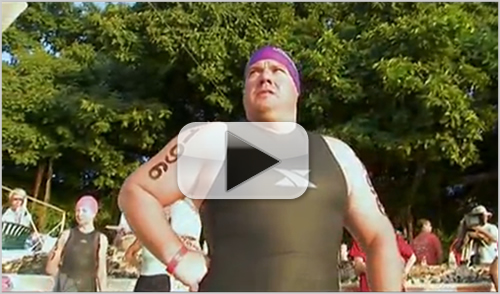
The people in our sport are amazing. I guess one of the reasons I enjoy it so much is that those that are in it constantly inspire me. I’ve been lucky to know some great triathletes and coaches that have given me the confidence and guidance to help me reach my triathlon goals.
I feel blessed to have the opportunity to work with so many athletes here at Triathica. I try encouraging everyone to reach his or her own individual goals while I keep my own in sight.
You CAN do this!
Cheers!
DO YOU TEMPO? HOW TEMPO RUNS CAN MAKE YOU FASTER?
Jarrett Pflieger
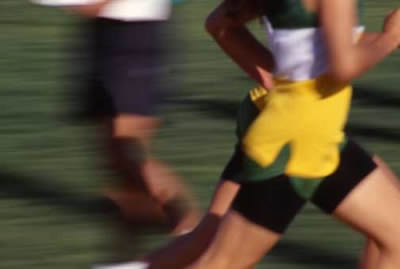 What exactly is a tempo run and how can you incorporate them into your training to make you faster?
What exactly is a tempo run and how can you incorporate them into your training to make you faster?
A tempo run is basically a higher paced workout that is faster than an easy run, but a bit slower than race or interval pace. The goal of a tempo run is to sustain a constant speed over a specified distance. How far that distance should be depends on your race distance and what cycle of the season you are in. The pace you should run at depends on your current fitness level and running ability. A good rule of thumb for tempo workouts is that it should be done at a comfortably hard pace. It should be fast, but under control and sustainable.
When you are running at tempo pace, lactate and hydrogen ions are being released into your muscles. These eventually cause your muscles to become acidic and you begin to fatigue and feel “the burn.” During tempo runs, you are training your body to use these byproducts more efficiently, enabling you to run at a faster pace without fatiguing. This point of fatigue is also known as your lactate threshold. Raising your “threshold” is key to being able to hold a faster pace for longer time periods.
Many people make the mistake of focusing too much on long and slow runs to build aerobic base. There is a need for this type of training, as it allows the body to deliver more oxygen to the muscles, but tempo training increases the body’s ability to use that oxygen once it gets to the muscles. You need to incorporate both in your training to reach your potential as a runner.
So how long should your tempo runs be? Well, it depends. The minimum tempo run should be around two to three miles or 15-20 minutes long if you are training for a 5K or a sprint triathlon. Anything less than that and you will not get much benefit. For longer distances like a 10K, four to six miles is probably sufficient. Marathoners or Ironman triathletes will benefit from eight to ten mile tempo runs.
Tempo runs are best performed during peak training weeks since they are relatively high intensity training sessions. Instead of trying to increase time or distance of your tempos, try to increase the speed you can sustain over a fixed distance. Intensity has been shown to be a better stimulus for physical adaptation than volume or duration.
Before going for a tempo run, it is important to thoroughly warm up for 10-15 minutes since you will be running at a high intensity and the risk for injury is higher during these times. Make sure you also cool down for 10-15 minutes at a nice easy pace. Throw in a tempo run once or twice a week and watch your speed increase and your run times drop.
STAYING MOTIVATED
Ron Saetermoe
We’re in the off-season now. How do you know? Look at the rolls beginning to form around your waist!
It’s hard staying motivated during the off-season, especially if you’ve trained and raced hard. So how do you do it?
For me, daily exercise is the norm. A day without exercise is like a day without brushing my teeth. Something’s missing. So these days it’s hard for me not to exercise. How sick is that?
I know that’s not normal, and it’s taken me many years of this twisted behavior to get there, but that’s me. If you’re not like me you may need a little motivation. Here are a couple ideas:
• Exercise with a group. There are plenty of them out there. Most of the triathlon clubs have group workouts and there are plenty of running and cycling clubs.
• Use a training plan. Yes, even during the off-season a training plan can help. Your workouts may not be as long or as intense, but many people find that this structure helps keep them on track.
• Concentrate on your “limiter.” Your limiter is the event you’re weakest at relative to your competition. For me, that’s the cycling leg so I’ll concentrate on doing more cycling during this period.
• Start a resistance-training program. Too many triathletes blow off the resistance (strength) training thing. The off-season is a great time to pull back on the swim/bike/run training and do more resistance training.
• Don’t go home after work. This one gets me most of the time. If I can do my workout immediately after work instead of going home, the chances that I’ll actually get my workout in is expontially higher.
• Watch triathlon videos. We’ve got a bunch here at Triathica and the Universal Sport channel broadcasts triathlons from time to time.
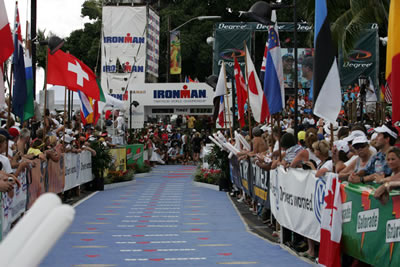
• Register for an early season race. I’ll be doing the Desert Triathlon out at Lake Cahuilla again next year on March 7th and the California 70.3 on March 27th. The “threat” of these early season races helps keep you motivated to stay fit.
I’m sure there are many more ideas out there but these are a few of my favorites. Oh yeah, and don’t forget, we’re here at Triathica to help keep you motivated too.
Cheers!
FREE GROUP WORKOUTS (week of November 30th)
All of our group workouts are free to members and non-members, so come on out (Pool entry is $2.50)!
We want everyone to enjoy our group workouts but we should clarify the intent. The intent of the group workouts is to “workout.” Yes, it includes a social element. Yes, your Triathica host is happy to give you tips. But please be aware that everyone there is attempting to get a workout in at his or her own pace. If we all go at the slowest person’s pace many people won’t be getting in a proper workout. We will attempt to pair you up with another athlete so you’re not left alone.
Week of November 30th
Event: Group Swim
Place: Crown Valley Community Pool in Laguna Niguel (Next to the YMCA; $2.50 entry fee)
Day: Wednesday, December 2nd
Time: 6:00 p.m.
Planned Workout: Individual preference
Event: Group Ride
Place: Triathica HQ
Day: Saturday, December 5th
Time: 7:00 a.m.
Planned Workout: Santiago Canyon Loop
Event: Group Run
Place: Triathica HQ
Day: Sunday, December 6th
Time: 7:00 a.m.
Planned Workout: Whiting Ranch Loop
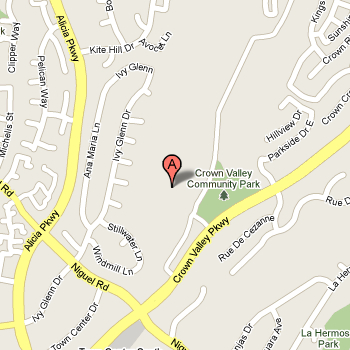 |
Crown Valley Community Pool – Laguna Niguel From the 5 North take the exit 86 for Crown Valley Pkwy. Turn right at Crown Valley Pkwy and drive about 3 mile. The pool will be on the right. |
VARY WORKOUT FOR BEST RESULTS
Alyson Wolfe C.S.C.S
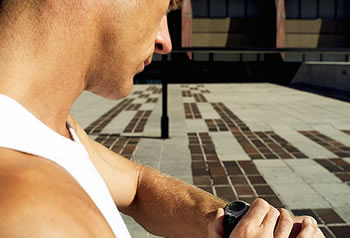 When training for any endurance event there are four very basic principals that all athletes should be familiar with. These four variables all relate with one another and can be applied to any workout regimen; frequency, intensity, volume and rest (FIVR). Training frequency refers to the number of training sessions that have been completed in a given period of time; for example, one week. When deciding on training frequency, an athlete needs to consider their current training status, the season they are in and the other variables of intensity, volume and rest. The variable of rest is a very influential factor in determining the frequency of your workouts. You need to make sure that you are getting adequate rest between workouts and allowing your body sufficient recovery.
When training for any endurance event there are four very basic principals that all athletes should be familiar with. These four variables all relate with one another and can be applied to any workout regimen; frequency, intensity, volume and rest (FIVR). Training frequency refers to the number of training sessions that have been completed in a given period of time; for example, one week. When deciding on training frequency, an athlete needs to consider their current training status, the season they are in and the other variables of intensity, volume and rest. The variable of rest is a very influential factor in determining the frequency of your workouts. You need to make sure that you are getting adequate rest between workouts and allowing your body sufficient recovery.
Athletes who are training at maximal or near-maximal intensity need to consider the frequency of these max workouts and how much rest they need in between sessions. As the intensity of their workouts progresses, the frequency of those workouts needs to be lessened and more rest is required for adequate recovery. The ability to train more frequently can be increased by alternating lighter and heavier training days and using a variation of workouts. Every athlete needs to also consider their occupation. If an athlete has a physically demanding job or are on their feet all day they may not be able to benefit from the same training frequencies and intensities that less active professionals are able to complete.
The volume that an endurance athlete performs is quantified in distance. The demands placed on an athlete’s body by performing those distances require a specific amount of metabolic energy and physiological stress. These must be closely monitored to avoid exhaustion and symptoms of over training. When training days consist of long workouts, be sure that the frequency of these workouts are manipulated to allow you enough rest in between.
A combination of all of these components of frequency, intensity, volume and rest must be taken into consideration when planning your workouts. Do not plan on too many long distance workouts back-to-back and try to avoid high intensity workouts too close together. Always make sure that you are getting enough rest and time to let your body heal and recover, only then are you getting the adaptations that are going to make you a faster and more efficient competitor.
If you don’t feel you can perform a scheduled workout up to your ability, do an active recovery session instead, or just skip it altogether. A workout means nothing if you don’t allow your body time to heal. It can actually hurt your performance believe it or not.
Change up your workouts and always be monitoring your body for what it needs, both physiologically and physically. If you need a break, take one, your workouts and your competition goals should be challenging but still fun. Enjoy your workouts.
IRONMAN ARIZONA RACE REPORT
Ron Saetermoe
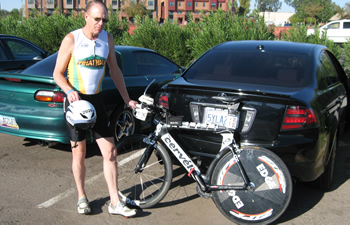 It was nice to have Jarrett accompany me this year to Arizona. We had the chance to talk triathlon until we were blue in the face and get to know each other a little better.
It was nice to have Jarrett accompany me this year to Arizona. We had the chance to talk triathlon until we were blue in the face and get to know each other a little better.
Friday was very busy with driving out to Tempe, checking into the race, athlete dinner and athlete’s meeting. I felt like I had already completed my Ironman.
Saturday started early with breakfast at the Doubletree hotel. They really did a nice job. I’ll probably go back again next year.
Over breakfast I debated, then subsequently talked myself out of, swimming in Tempe Town Lake at 7:00 a.m. I knew the water was cold, and dirty, and didn’t feel the need to validate either. A nice 20-minute swim in the 80-degree hotel pool was just what I needed.
After my swim I did the most insane thing a triathlete can do – I registered for Ironman Arizona – OVER A FULL YEAR BEFORE THE RACE!!! I hadn’t even completed this one and I paid for the next one! What lunacy! And how in the heck do they collect $550.00 from 2,400 people a year in advance? I want that gig! (BTW, they’re sold out for 2010!)
After that I put Russ Jones’ speedy Zipp race wheels on and tested out the bike. Edge Cyclesports had it dialed in perfectly.
Then on to drop off my swim-to-bike and bike-to-run transition bags. Everything was going perfectly.
Back to the hotel for a little nap and dinner later with Jarrett and Scott Neubauer of Coastal Health and Fitness, an Active Release practitioner. Carbo loaded and ready for a good nights sleep.
I did sleep well for the night before an Ironman. I guess I got about six hours, which is about six hours more than I’d previously gotten. Had my breakfast of cottage cheese, walnuts and blueberries, English muffin and OJ and I was ready to rock!
We got down to the race site about 5:00 a.m. and I did all the prerace stuff including putting air in my tires and numerous potty breaks.
It was funny that my bike was racked directly between Kim McDonald and Brian Smallwood. Both raced the sprint worlds in Australia. Kim won his age group (55 – 59). Kim is known for his short-course prowess but punched his ticket to Kona back in 2008. Amazing guy.
Brian is in my age group (50 – 54) and has gone to Kona a couple times. A strong swimmer and cyclist, Larry Davidson always seems to beat him on the run. This year he would be my key competition.
At 6:40 a.m. they let the age-groupers down on to the dock and into the water. The pros were already in the water and were scheduled to start at 6:50. The water was cold . . . about 52 – 53 degrees. Unlike Ironman Coeur d’Alene where the water was about the same temperature, IMAZ is a water start, not a shore start, which means we were in the cold water doing nothing for 20 minutes. By the time we started I was practically convulsing because I was so cold.
The cannon went off and my legs immediately froze up. First, intense pain, then hyperventilating, then puking. I never expected this and felt bad for the swimmers behind me (for various reasons). If I could have gotten out of their way and to shore I probably would have quit. How can I swim if I can’t breathe?
Somehow I managed to push through it and swam really easy and eventually picked up the pace. Very frustrating to say the least.
The transition to the bike was SLOW! It didn’t feel as slow as it was. Perhaps it was because things slow down when you’re frozen!
Once I got on the bike I started to thaw. I went hard on the bike knowing that it might impact my run but I wanted to leave it all on the course so I pushed hard. I thought I’d be able to go 5:30, which was about 20.4 MPH. If it wasn’t for the wind I probably could have made it.
It didn’t seem like there was as much drafting as last year but it was still going on. There are a couple narrow spots on the course where it’s tough not to draft but those stretches aren’t too long.
The transition to the run was smooth and faster than last year. My legs were tired but I felt ready to run. This was very different than my two Ironman’s last year. At IMCDA I didn’t have the muscular endurance and at IMAZ I didn’t have the nutrition dialed in. I could tell it was going to be a better day for me.
My splits on the website show my speed ranging from 8:56 to 12:18 per mile. I don’t think those speeds are accurate but so be it. I did start out strong on the run and tried to hold an 8:30 pace, which I did for a while but then slowed quite a bit. From then on it was run and walk through the aid stations. Sometimes I ran through but I did have to walk a couple times.
Somewhere around 20 miles I saw Jarrett with the video camera. Boy, you really don’t want to be video taped when you feel the way I did. He walked with me for a while and asked if he thought I could go 11:30 if I started running again. I figured 11:00 minute miles, so yes.
At that point I felt rejuvenated and started to run; not fast, but it was definitely a run. I ran the rest of the last loop and brought it in strong.
Coming into the finishing chute was a runner up ahead. I wanted to give him his space so he could get the good finish line photo so I slowed down only to have him catch his foot on the loose carpet and take a nosedive. Turns out it was Brian Smallwood, Larry’s nemesis. I asked him if he was okay as he got up and finished the race. I finished one second behind him!
It was a great day for me out there. Nothing goes perfectly, as you can see, but I was thrilled to have beaten my time from last year by over an hour.

THANKS FOR ALL THE HELP!
Ron Saetermoe
 You have to understand that Ironman isn’t a solo effort. To really pull one of these things off you need the understanding and support of a lot of people.
You have to understand that Ironman isn’t a solo effort. To really pull one of these things off you need the understanding and support of a lot of people.
For me that includes my girlfriend’s understanding of my training days. Many times I’ve had to cut our evenings short because I had a big training session the following day.
It includes my son’s understanding as well. Since I only see him every other week it has cut into our “together time.” He’s always taken it in stride.
My mom has been a huge support as well. She looks after my son regularly and even helps me with my shopping.
The guys here at Triathica help out as well. Jamie keeps a lot of stuff off my plate so I can concentrate on my other responsibilities and have time to train. And of course Jarrett helps in so many ways. This trip he was chauffer, videographer and Sherpa.
Then of course you have your friends and technical support. Larry Davidson is always there to encourage me and give me tips (I drank Infinit on the bike at his urging and it worked great). Russ Jones loaned me his race wheels again and is always a great sounding board. Chris Johnson always listens to my ramblings and dispenses great advice.
And I can’t forget to thank my good friends at Edge Cyclesports, OneTri.com and TriBuys.com.
Thank you to all of you . . .I couldn’t have done it without your support!
Cheers!
FREE GROUP WORKOUTS (Week of November 23rd)
All of our group workouts are free to members and non-members, so come on out (Pool entry is $2.50)! Please RSVP, or we cannot guarantee there will be someone there to workout with.
We want everyone to enjoy our group workouts but we should clarify the intent. The intent of the group workouts is to “workout.” Yes, it includes a social element. Yes, your Triathica host is happy to give you tips. But please be aware that everyone there is attempting to get a workout in at his or her own pace. If we all go at the slowest person’s pace many people won’t be getting in a proper workout. We will attempt to pair you up with another athlete so you’re not left alone.
Week of November 23rd
Event: Group Swim
Place: Crown Valley Community Pool in Laguna Niguel (Next to the YMCA; $2.50 entry fee)
Day: Wednesday, November 25th
Time: 6:00 p.m. (Pool closes at 8:00 p.m.)
Planned Workout: Individual preference
Event: Group Ride
Place: Triathica HQ
Day: Saturday, November 28th
Time: 7:00 a.m.
Planned Workout: Santiago Canyon Loop
Event: Group Run
Place: Triathica HQ
Day: Sunday, November 29th
Time: 7:00 a.m.
Planned Workout: Whiting Ranch Loop
 |
Crown Valley Community Pool – Laguna Niguel From the 5 North take the exit 86 for Crown Valley Pkwy. Turn right at Crown Valley Pkwy and drive about 3 mile. The pool will be on the right. |
BIG ROCK TRI (DAM SPRINT)
Janet Richard
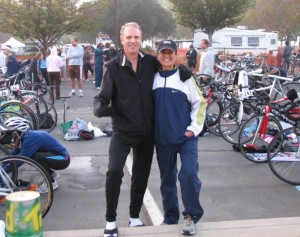
Janet and Ron
There wasn’t a stitch of wind as I watched the sunrise over the Big Rock at Lake Perris. Schools of tiny fish made intersecting circles on the glassy lake as mist rose off the water in mid-40 degree temps. Then I saw something that took my breath away, an enormous fish surfaced through the still water. Was this Loch Ness?
“Yeah, the big mouth bass get pretty huge out here,” the park ranger informed me, “but I’ve never seen one bother a swimmer yet.”
Maybe the reassurance that I wasn’t going to be swallowed whole during the swim portion of the race explained my feeling of calm as I stood waist deep in the water waiting for my wave to start. Or maybe it was deep breaths of foggy air filled with that indescribable smell of chaparral. Or maybe it was because it wasn’t my first tri anymore. This was #2 and I knew I could do it.
Ron took off two waves ahead of me. “Just enjoy it,” he said before he left. It was his birthday and he was celebrating by doing the Olympic Distance, with two laps around the swim course. I was doing the Sprint and only had to do one, and joked that he would probably lap me. I wasn’t far off. Although I finished the swim ahead of him, he blew by me about a mile into the bike. “You go, Birthday Boy!”
The ride took us out of the south exit of the park, onto the Ramona Expressway, and looped us back up to the north park entrance. There were several other riders around. Some passed me, others I passed. “Where are all the women?” I wondered. It wasn’t till the 300-foot climb toward the end of the ride that I saw the first other female cyclist, stopped mid-climb on the steepest part of the hill. “Bad place to have to start up again,” I thought as I reached the crest and enjoyed a nice downhill back to the transition area.
I was looking forward to the run to the dam and back on a trail that gently wound through chaparral. Cheers of “girl power” from the volunteers encouraged me as I started feeling a bit more confident on my legs. About a third of the distance into the run, I saw the first woman coming back the other way, running strong. I turned and spyed a 40 on her leg. She was in my age group. Then three more women, not in my age group, ran past before I made the turn at the halfway point and started back to the finish. Could I be second in my age group? No, I couldn’t believe it, as I passed a 14-year old boy, the same age as my oldest son.
With the finish line in sight, I picked up my pace and felt excited. The last thing on my mind was to look over my shoulder for approaching racecars, and that’s what it felt like when a speedy 15-year old girl passed me on my right. “What just happened?” I just had to laugh, especially when the announcer called out, “Janet Richard from Lake Forest just crossed the finish line.” Feeling like a celebrity as my transponder was removed, I celebrated with some oranges and Fig Newtons, as I waited for the results to be posted.
To my surprise, I was the 6th overall female, and 2nd in my age group, beaten by the overall first place woman with a time about 12 minutes better than mine. Well, I wasn’t about to beat her anytime soon. But getting passed by a 15-year old at the finish line? That vexed me! If only I had transitioned a little faster. If only I had attacked that climb a little more, or swam in a straighter line. If only I hadn’t gotten stuck at that traffic light! I know I did great, but next time I want to do better.
Those teenagers!
FUNCTIONAL THRESHOLD POWER: IT COULD CHANGE THE WAY YOU TRAIN
Jarrett Pflieger
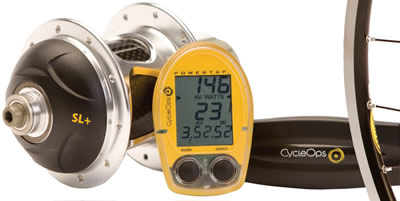 Training with power on the bike is the best way to get an accurate gauge of your intensity level during workouts. Once you know how much power you can produce at certain training intensities, you will be able to do workouts that improve different aspects of your cycling ability, namely weakness, and make sure you stay in those zones during training.
Training with power on the bike is the best way to get an accurate gauge of your intensity level during workouts. Once you know how much power you can produce at certain training intensities, you will be able to do workouts that improve different aspects of your cycling ability, namely weakness, and make sure you stay in those zones during training.
The days of training by feeling alone are over if you want to truly do well at triathlon or in road racing. Even pure heart rate training can be misleading, as your heart rate is highly volatile and can change from day to day. If your heart rate is always changing, it is nearly impossible to know if you are training at the proper intensity levels depending on your goals. For instance, if you are a very good sprinter with strong legs, but you tend to get dropped on longer rides, you should probably incorporate longer endurance and base building sessions into your training schedule, but how do you know how hard to go in order to get the proper adaptation from your body?
In order to properly identify your bodies training zones, you should know your functional threshold power. Functional threshold power (FTP) is define as the maximum amount of average power you can sustain on the bike without extreme fatigue for one hour. Once you know your FTP, you can use it as a reference point to determine how much intensity you need over different distances for maximum physiological response depending on your goal for the workout.
To test your FTP, the first thing you need is a power measuring cycle. There are power taps you can buy for your own bike, or you can find a power measuring indoor trainer or even find a gym that has power measuring indoor cycles. To find the maximum power you could sustain over an hour, the obvious way would be to ride a 60-minute time-trial and measure your average power for that ride. Although this theoretically would be the most accurate way to measure your FTP, it is very hard for a rider to focus and be able to give everything they have for a full 60 minutes. Luckily there is a pretty accurate and much less time consuming way to test your functional threshold power.
To test your FTP, what you can do is perform a 20-minute time, record your average power for the session, then substract 5% to get an accurate estimate about what you could sustain over an hour. For example, if you averaged 300 watts for 20 minutes, multiply that by .95 to get your FTP, which would be 285.
One you know your FTP, you can use it as a reference point and increase or decrease intensity for workouts depending on how long you are riding and what you aim to accomplish during the workout.
Breaking down your specific training zones is a bit more complicated, but do research, buy some books, or find a qualified triathlon or cycling coach to help. Training too easy won’t do much for you, neither will training too hard. Knowing your functional threshold power will help you determine where you need to be for maximum workout effectiveness.


